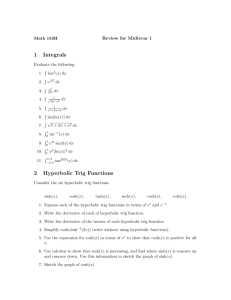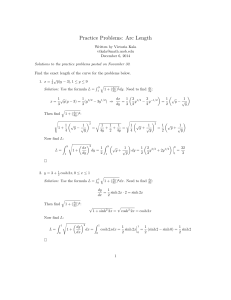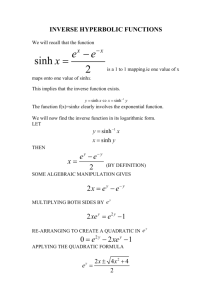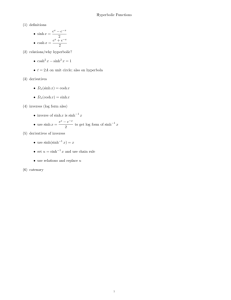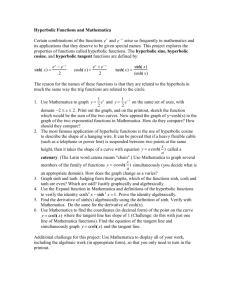Hyperbolic Sine & Cosine Exploration (Calculus AB)
advertisement
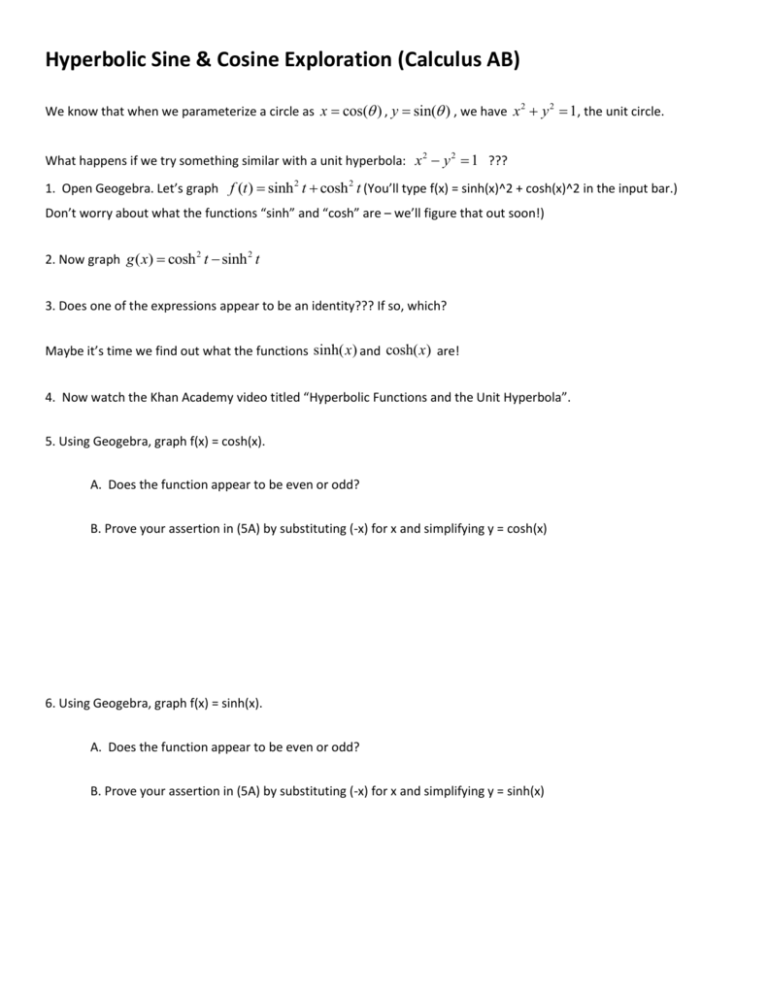
Hyperbolic Sine & Cosine Exploration (Calculus AB) We know that when we parameterize a circle as x cos( ) , y sin( ) , we have x 2 y 2 1, the unit circle. What happens if we try something similar with a unit hyperbola: x 2 y 2 1 ??? 1. Open Geogebra. Let’s graph f (t ) sinh 2 t cosh 2 t (You’ll type f(x) = sinh(x)^2 + cosh(x)^2 in the input bar.) Don’t worry about what the functions “sinh” and “cosh” are – we’ll figure that out soon!) 2. Now graph g ( x) cosh 2 t sinh 2 t 3. Does one of the expressions appear to be an identity??? If so, which? Maybe it’s time we find out what the functions sinh( x) and cosh( x) are! 4. Now watch the Khan Academy video titled “Hyperbolic Functions and the Unit Hyperbola”. 5. Using Geogebra, graph f(x) = cosh(x). A. Does the function appear to be even or odd? B. Prove your assertion in (5A) by substituting (-x) for x and simplifying y = cosh(x) 6. Using Geogebra, graph f(x) = sinh(x). A. Does the function appear to be even or odd? B. Prove your assertion in (5A) by substituting (-x) for x and simplifying y = sinh(x) 7. Using Geogebra, graph j(x) = cosh(x) + sinh(x). Does the graph resemble a familiar parent function? Now find cosh(x) + sinh(x) algebraically: 8. Using Geogebra, graph p(x) = cosh(x) – sinh(x). Does the graph resemble another parent function? Find cosh(x) – sinh(x) algebraically: 9. Time for a little calculus!!! A. Differentiate cosh( x) e x e x 2 B. Differentiate sinh( x) e x e x 2 C. State the relationships between sinh( x), cosh( x), d d sinh( x) , and cosh( x) dx dx



